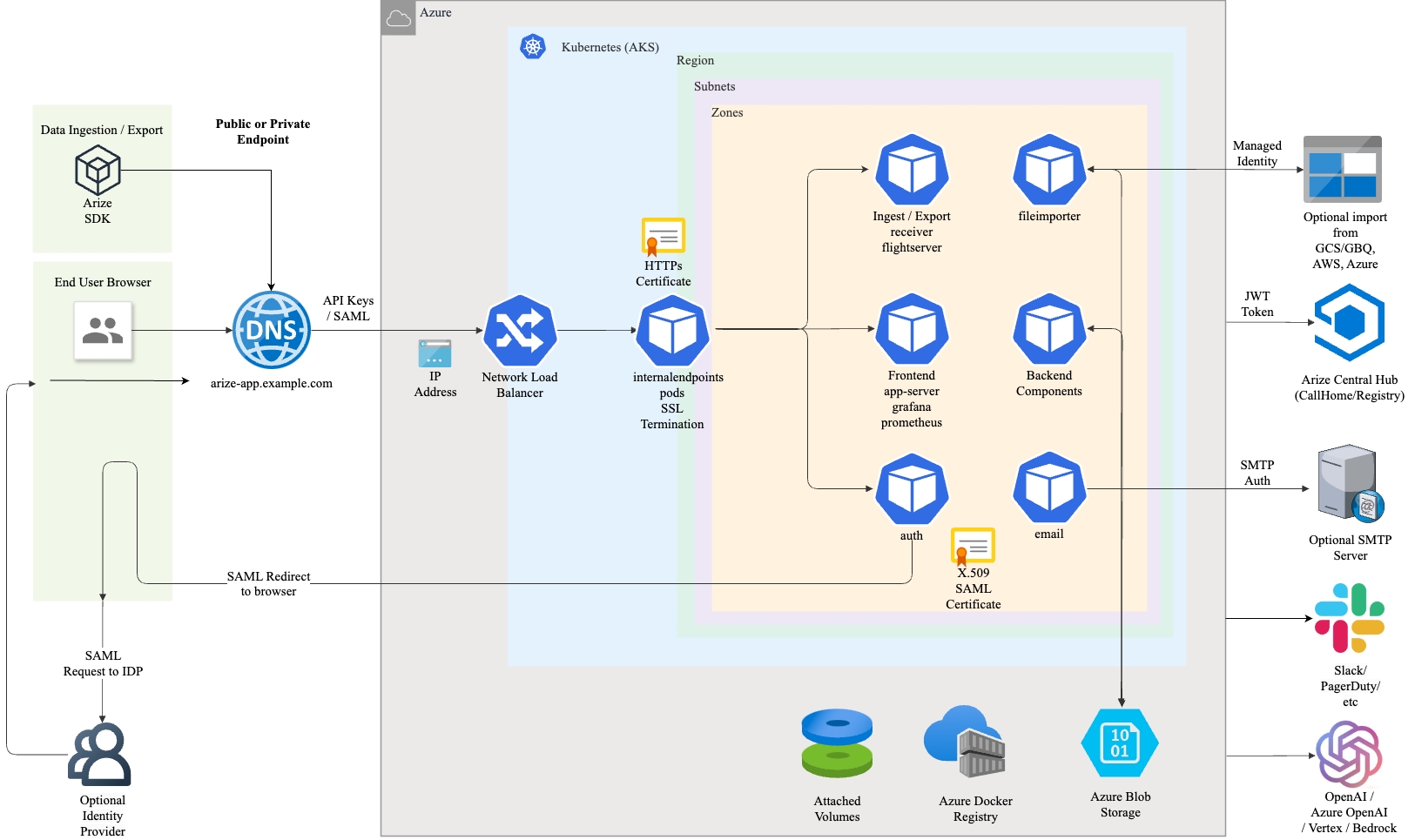Installation on Azure
The diagram below depicts the target topology for Azure.

Requirements for Azure:
A storage account configured with
Hierarchical namespace: Disabledfor holding the Arize containers.A storage account key for Arize pods to have access to the containers.
Two Azure blob storage containers for gazette and druid data.
An AKS cluster with a minimum of two node pools: base pool and druid pool.
The base node pool should be labeled with
arize=trueandarize-base=true.The druid node pool should be labeled with
arize=trueanddruid-historical=true.Storage classes
managed-csi-premiumandmanaged-csiare preferred and used by default.An ACR or docker registry is optional as Arize pulls images from Arize AX's central image registry by default.
Namespaces
arize,arize-operator, andarize-sparkcan be pre-existing or created later by the helm chart.If deployed on a private VNet, a private link to the storage account may be required for reachability from the cluster.
Contact Arize for the <sizing option> field. This field controls the size of the deployment and must align
with the size of the cluster. Common values used would be small1b or medium2b.
values.yaml:
cloud: "azure"
clusterName: "<cluster-name>"
hubJwt: "<JWT>" (base64 encoded)
gazetteBucket: "<name of gazette bucket>"
druidBucket: "<name of druid bucket>"
postgresPassword: "<user selected postgres password>" (base64 encoded)
organizationName: "<name of the organization or company>"
cipherKey: "<encryption key>" (base64 encoded)
clusterSizing: "<sizing option>"
azureStorageAccountName: "<storage-account-name>" (base64 encoded)
azureStorageAccountKey: "<storage-account-key>" (base64 encoded)
collectNodeMetrics: true
# The URL used to reach the Arize UI once ingress endpoints are created
appBaseUrl: "https://<arize-app.domain>"
# Only required if using a private docker registry
pushRegistry: "<registry-name>.azurecr.io"
pullRegistry: "<registry-name>.azurecr.io"
# Only required if using a common node pool
historicalNodePoolEnabled: falseChoose an approach based on the deployment. For Helm:
$ helm upgrade --install -f values.yaml arize-op arize-operator-chart.tgzLast updated
Was this helpful?

